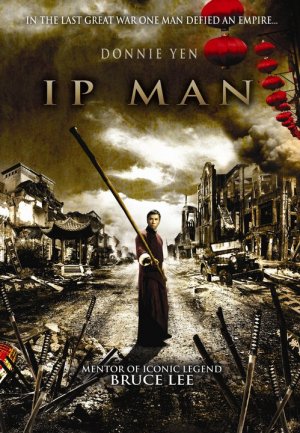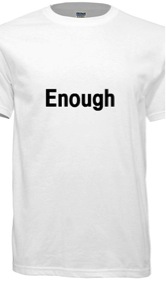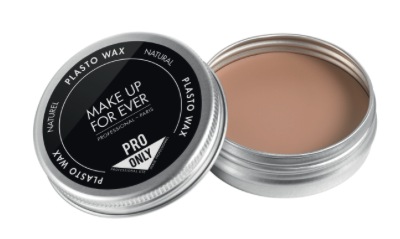Petitioner challenges claims 1-32 of the ‘191 patent as directed to patent-ineligible subject matter under 35 U.S.C. § 101. Pet. 72-77. Patent eligible subject matter is defined in 35 U.S.C. § 101:
Whoever invents or discovers any new and useful process, machine, manufacture, or composition of matter, or any new and useful improvement thereof, may obtain a patent therefor, subject to the conditions and requirements of this title.
There are, however, three limited, judicially-created exceptions to the broad categories of patent-eligible subject matter in §.101: laws of nature; natural phenomena; and abstract ideas. Mayo Collaborative Servs. v.Prometheus Labs., Inc., 132 S. Ct. 1289, 1293 (2012). The Supreme Court has made clear that the test for patent eligibility under § 101 is not amenable to bright-line categorical rules. See Bilski v. Kappos, 130 S. Ct. 3218, 3222 (2010).
1. Whether the Claims Are Directed to an Abstract Idea
Petitioner challenges each claim of the ‘191 patent as failing to recite patentable subject matter under § 101, because the claims fall within the judicially created exception encompassing abstract ideas. Pet. 73-76. In Alice Corp. Pty, Ltd. v. CLS Bank International, 134 S. Ct. 2347 (2014), the Supreme Court reiterated the framework set forth previously in Mayo, “for distinguishing patents that claim laws of nature, natural phenomena, and abstract ideas from those that claim patent-eligible applications of these concepts.” Alice, 134 S. Ct. at 2355. The first step in the analysis is to “determine whether the claims at issue are directed to one of those patent ineligible concepts.” Id. If they are directed to a patent-ineligible concept, the second step in the analysis is to consider the elements of the claims “individually and ‘as an ordered combination'” to determine whether there are additional elements that ‘”transform the nature of the claim’ into a patent-eligible application.” Id. (quoting Mayo, 132 S. Ct. at 1291, 1297). In other words, the second step is to “search for an ‘inventive concept’- i.e., an element or combination of elements that is ‘sufficient to ensure that the patent in practice amounts to significantly more than a patent on the [ineligible concept] itself.”‘ Id. (alteration in original) (quoting Mayo, 132 S. Ct. at 1294).
Turning to the Petition, Petitioner, relying on the framework set forth in Mayo and followed in Alice, asserts that claims 1-32 are unpatentable under § 101, because the claims are drawn to patent-ineligible “abstract ideas, with only insignificant, well-known subject matter added.” Pet. 73; see also Pet. 73-76. Patent Owner disagrees. Prelim. Resp. 56-65.
In determining whether a method or process claim recites an abstract idea, we must examine the claim as a whole. Alice, 134 S. Ct. at 2355 n. 3. Claim 1, as a whole, relates to a computer-implemented method to transform data in a particular manner-by inserting an authenticity key to create formatted data, enabling a particular type of computer file to be located and from which an authenticity stamp is retrieved. On its face, there is nothing immediately apparent about these physical steps that would indicate the claim is directed to an abstract idea.
Moreover, claim 1, as a whole, is distinguishable from the patent ineligible abstract concepts found in Alice or Bilski. Alice involved “a method of exchanging financial obligations between two parties using a third-party intermediary to mitigate settlement risk.” Alice, 134 S. Ct. at 2356. Bilski involved the concept of hedging risk, which the Court deemed “a method of organizing human activity.” Bilski, 130 S. Ct. at 3222. Like the concept of hedging risk in Bilski, Alice’s “concept of intermediated settlement” was held to be “‘a fundamental economic practice long prevalent in our system of commerce.”‘ Alice, 134 S. Ct. at 2356. Similarly, the Court in Alice found that “[t]he use of a third-party intermediary . . . is also a building block of the modem economy.” Id. “Thus,” the Court held, “intermediated settlement . . . is an ‘abstract idea’ beyond the scope of § 101.” Id.
Petitioner asserts that claim 1 is an abstract idea, because it is nothing more than computerizing a purported centuries old practice of placing a trusted stamp or seal on a document to indicate the authenticity of the document. Pet. 74. Petitioner’s position is unpersuasive, because as indicated by Patent Owner (Prelim. Resp. 64-65), Petitioner does not tie adequately the claim language to the purported abstract concept of placing a trusted stamp or seal on a document. Although the claim recites retrieving an authenticity stamp, the claim does not recite placing the stamp, much less. doing so on a paper document, presumably as “centuries-old” practices have done. Similarly, the claim does not recite a paper document. Moreover, claim 2, which depends from claim 1, additionally recites that the formatted data is a web page, not a paper document.
We also find that Petitioner does not provide sufficient persuasive evidentiary support that the placing of a trusted stamp or seal on a document is “a fundamental economic practice” or a “building block of the modern economy.” See Alice, 134 S. Ct. at 2356 (citing various references concerning the concept of intermediated settlement, including an 1896 reference).
Petitioner further asserts claim 1 is patent-ineligible abstract idea, because it “relates to nothing more than manipulating and collecting data.” Pet 73 (citing CyberSource Corp. v. Retail Decisions, Inc., 654 F.3d 1366, 1370 (Fed. Cir. 2011); In re Grams, 888 F.2d 835, 840 (Fed. Cir. 1989)). Patent Owner disagrees, indicating that claim 1 recites (1) transforming at an authentication host computer, received data (a) by inserting an authenticity key (b) _to create formatted data; and (2) returning, from the authentication host computer, the formatted data (a) to enable the authenticity key to be retrieved fro the formatted data and (b) to locate a preferences file. Prelim. · Resp. 58-59.
Petitioner’s reliance on CyberSource and Grams is unpersuasive. In CyberSource, the Federal Circuit indicated that mere collection and organization of data does not satisfy the transformation prong in the machine-or-transformation test See CyberSource, 654 F.3d at 1370. The Federal Circuit also indicated that the mere manipulation or reorganization of data also did not satisfy the transformation prong. See id. at 1375. The Federal Circuit concluded, however, that the claims at issue were to a patent ineligible abstract idea, not merely because of the collection, organization, and manipulation of data, but because all the claimed steps could be performed in the human mind, which is not the case here. See id. at 1373, 1376-77. Rather, the challenged claims specifically recite “transforming . . . received data by inserting an authenticity key to create formatted data,” thereby authenticating a web page with an authenticity stamp. Thus, the claims require a fundamental change to the data; a change that cannot be performed in the human mind.
Although the Federal Circuit in Grams held that data gathering steps cannot make an otherwise nonstatutory claim statutory, the court did not indicate that a claim with only data gathering steps and a mathematical algorithm necessarily always would be nonstatutory. Grams, 888 F.3d at 840 (quoting In re Meyer, 688 F.2d 789, 794 (CCPA 1982)).
Claim 1 of the ‘191 patent recites “transforming . . . at an authentication host computer” and “returning . . . from the authentication host computer,” which are not immediately apparent as being limited to data gathering. As such, on this record, claim 1 can be distinguished from claims in Grams, which rely on data gathering as the recited physical steps. Petitioner does not provide further arguments specifically addressing limitations in claims 2-32 (see generally Pet. 73-76).
For these reasons, we are not persuaded by Petitioner’s assertion that claims 1-32 are patent-ineligible abstract ideas. As such, we need not tum to the second step in the Mayo framework to look for additional elements that can transform the nature of the claim into a patent-eligible application of an abstract idea.
2. Whether the Claims Satisfy the Machine-or-Transformation Test
Petitioner also contends that claims 1-32 are unpatentable under § 101, because the claims are not tied to any particular machine and transform no article into a different state or thing, and thus do not satisfy the machine-or-transformation test. We understand that the machine-or transformation test is a useful tool, but is not sole test for whether an invention is a patent-eligible process under § 101. See Bilski 130 S. Ct. at 3227.
Petitioner asserts claim 1 does not transform an article into a different state or thing. Pet 76. Rather, according to Petitioner, the transforming limitation in claim 1 is merely manipulation or reorganization of data, which is not patent eligible. Pet. 76-77 (citing CyberSource, 654 F.3d 1375).
We are not persuaded that “transforming . . . received data by inserting an authenticity key to create formatted data” fails to satisfy the transformation prong. The claim language recites “transforming” one thing (“received data”) “to create” something else (“formatted data”) and further recites a particular manner of transforming (“by inserting an authenticity key”).
Petitioner does not provide persuasive argument or supporting evidence to support its position that the transforming limitation is merely manipulation or reorganization of data. Because Petitioner has not persuaded us that claim 1 does not meet the transformation prong of the machine-or-transformation test, we need not consider Petitioner’s other assertions that claim 1 does not meet the machine prong of the test. Furthermore, Petitioner does not provide further arguments regarding claims 2-32 (see generally Pet. 76-77), thus, we are not persuaded claims 1- 32 fail to satisfy the machine-or-transformation test.
Therefore, having considered the information provided in the Petition, as well as Patent Owner’s Preliminary Response, we are not persuaded Petitioner has demonstrated that it is more likely than not that the claims challenged in the Petition are unpatentable under 35 U.S.C. § 101.
(emphasis added).
In addition to noting that transformation of data can satisfy the test for patent eligibility in some circumstances, this decision is also important for noting that the determination of an abstract idea is sometimes grounded in underlying factual determinations — that is the determination of an abstract idea sometimes requires factual evidence. See also Arrhythmia Research Technology v. Corazonix Corp., 958 F. 2d 1053 (Fed. Cir. 1992)(“Whether a claim is directed to statutory subject matter is a question of law. Although determination of this question may require findings of underlying facts specific to the particular subject matter and its mode of claiming“).
(1) the assessment of 35 U.S.C. §101 is a question of law grounded in underlying factual findings;
(2) the assessment of whether something is an abstract idea can be based on factual findings — failure to provide sufficient evidence of facts with respect to an abstract idea can cause an abstract idea challenge to fail;
(3) with respect to core factual findings in a determination of patentability . . . the Board must point to some concrete evidence in the record in support of [its] findings.





